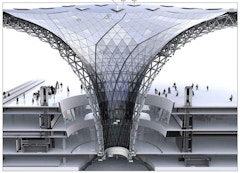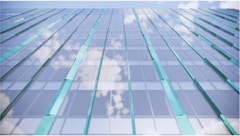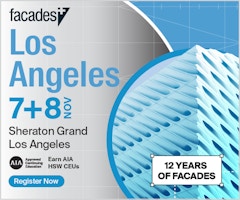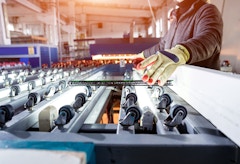
Form as Energy
All too often, high-performance building envelopes are considered in terms of new materials and technologies that push specific systems to improve

All too often, high-performance building envelopes are considered in terms of new materials and technologies that push specific systems to improve


This issue of SKINS will attempt to introduce you to composite materials in an accurate, useful and fairly in-depth way. But it’s only an introduction; it’s a start but by no means a rigorous exploration of the full potential of this remarkable material technology.



Facades+ bring together some of the world’s most productive building professionals. Be inspired and learn how to innovate all steps of facade implementation, from systems and materials to designs and delivery strategies.

This article discusses design, prototype development and a simulation study of novel types of facade systems, which integrate thermoelectric (TE)

The focus of this issue of SKINS is on embodied carbon -- the carbon dioxide (CO₂) emissions associated with materials and construction processes throughout the whole lifecycle of a building or infrastructure.


This paper will focus on the design and detailing of large-format glass enclosures intended to maximize transparency using state-of-the-art materials
The stability of monolithic glass fins is reasonably well defined; as an elastic material it behaves in a similar manner to other elastic materials

Gensler architects Jessica Santonastaso and Alan Estabrook survey existing research on embodied carbon in exterior wall assemblies and the availability of product declarations for relevant materials.


The Premier Conference for High-Performance Building Enclosures brings the AEC Community together to discuss all things facades, from technical innovations, new materials, and designs that push the envelope. Be inspired by presentations and discussion by world-class architects and engineers.


Climate change goals will require significant improvements in the way buildings are constructed and operated. Building reuse can combat climate


More details will be announced soon. Make sure you're signed up to receive event updates.

Pushing Change: R&D Innovation Processes in Construction Building Products, the second installment of the FTI Dialogues: Suppliers & Contractors Series, took place virtually on Friday, March 26th.